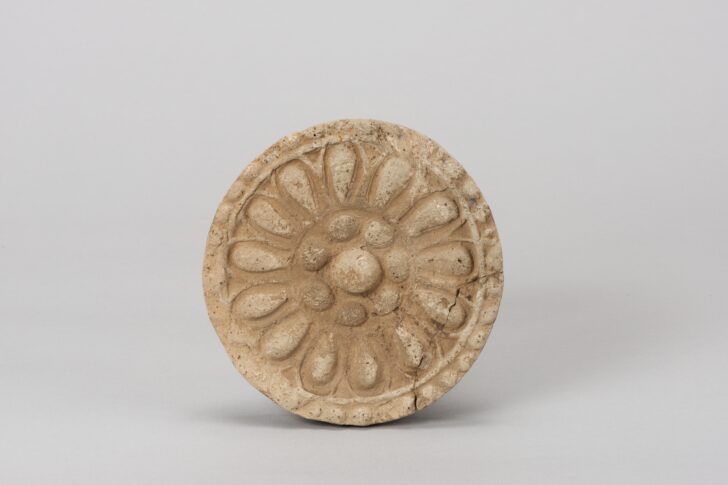Roof Tile
Korean

Description
Subject Matter:
Roofs and ceilings are important focal points of many traditional East Asian structures. Roofs often extend several feet beyond the walls of the structure, creating large, overhanging eaves. These two tiles would have been part of the decorated outer edge of such an eave.
Ceramic roof tiles were introduced to Korea from China around the first century BCE By the time these two examples were made, during the Silla kingdom (57 BCE–668 CE) and Unified Silla dynasty (668–935), Korean ceramic tile roofs had reached their peak in intricacy and design. Roofs made from interlocking ceramic tiles kept cold air, wind, and rain from entering a house. Due to their heavy weight, the structure supporting the roof had to be very strong. Expensive to produce, tile roofs were typically found on the homes of aristocrats and government officials, and on Buddhist and Confucian ceremonial buildings.
Physical Description:
This lotus medallion designed on this round tile-end consists of thirteen petals. The outer rim is decorated with eighteen round dents. The inner ring of the seedpod contains a big central seed surrounded by seven peripheral seeds. The outer rim is embellished with a bead pattern.
This gray-white, low-fired earthenware tile features a single-tier, thirteen-petal lotus design and is made from fine clay. The large lotus seed at the center of the ovary is surrounded by seven slightly smaller seeds. Evidence of repair using gray clay is visible on the reverse side of the tile.
[Korean Collection, University of Michigan Museum of Art (2017) p.37]
Usage Rights:
If you are interested in using an image for a publication, please visit https://umma.umich.edu/request-image/ for more information and to fill out the online Image Rights and Reproductions Request Form.